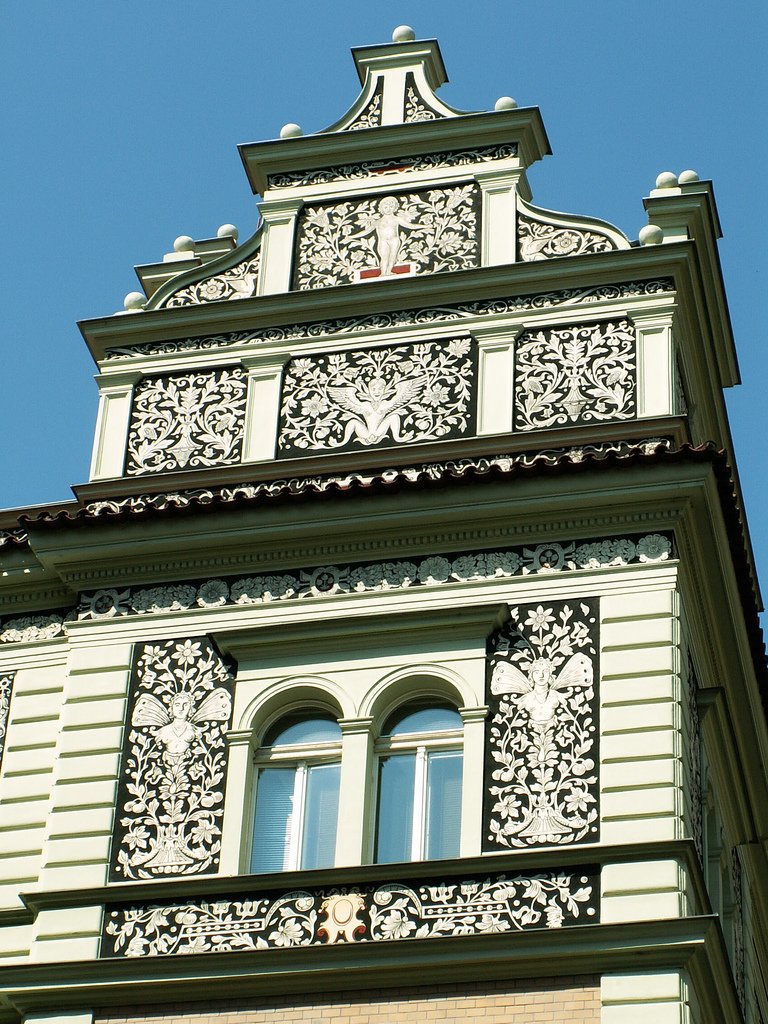#4951. Renaissance facade with rich sgraffito: elegance of white pattern on dark background
This architectural masterpiece represents an exquisite example of sgraffito — a decorative facade technique popular during the Renaissance and Baroque periods. The upper part of the building is crowned with a characteristic gable featuring curved lines and decorative spheres that give the silhouette lightness and expressiveness.
The facade is adorned with rich ornamental composition in white against a dark background, creating a striking contrast and depth. The ornaments include floral motifs, vegetal scrolls, and figurative elements arranged in symmetrical panels. Of particular interest are the decorative inserts depicting figures among the plant patterns.
The architectural articulation of the facade is clearly expressed: each tier has its own decorative character while maintaining stylistic unity. The window with its arched top is framed by decorative panels, emphasizing the vertical movement of the composition. Profiled cornices separate the building tiers, creating a rhythmic architectural ensemble.
The execution technique of the sgraffito demonstrates high craftsmanship and attention to detail, characteristic of Central European architectural tradition. Such richness of decor was intended to emphasize the status and artistic taste of the building's owner.
